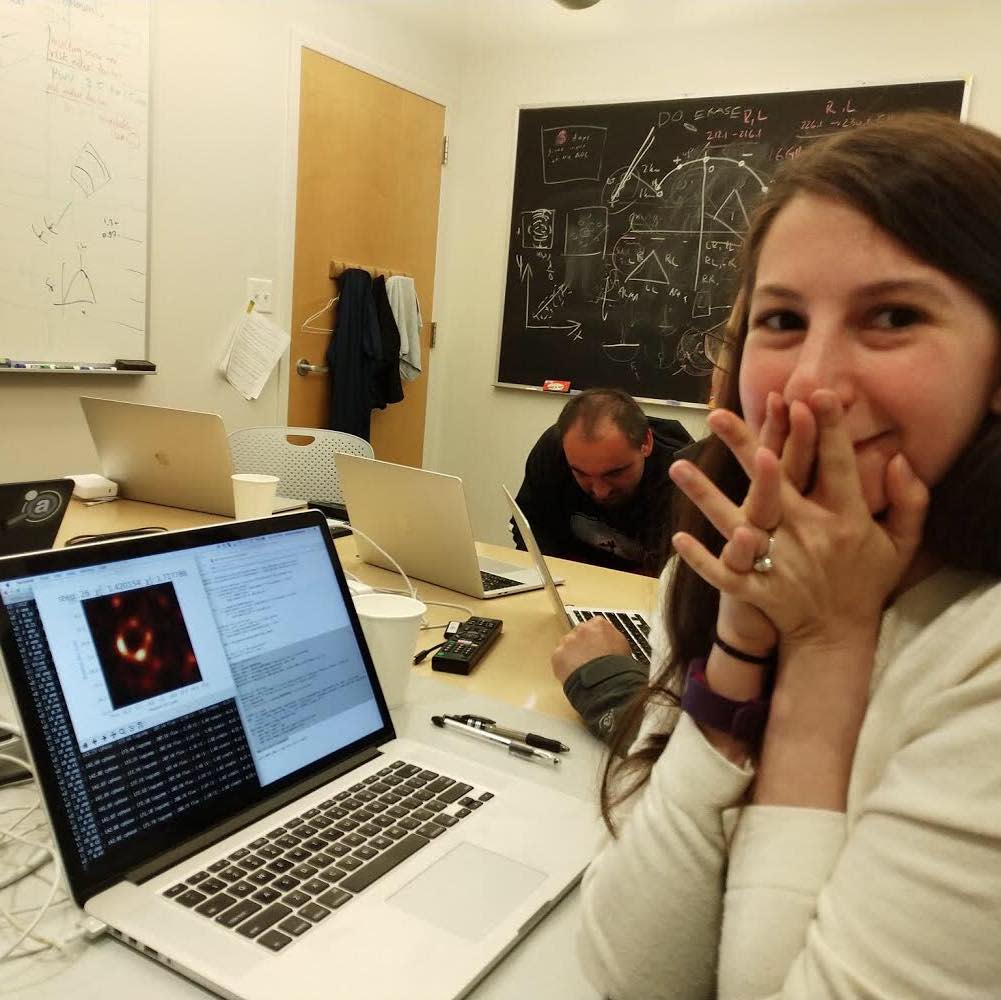5 things you need to know about black hole hero, Dr. Katie Bouman

In the space of a few days, MIT postdoctoral fellow and team member of Event Horizon Telescope, Dr. Katie Bouman, was hailed as a STEM hero and symbol of female empowerment that the next generation of girls could proudly look up to.
She was a member of the 200-strong team of scientists who captured the first-ever picture of the elusive black hole, and her work on the imaging algorithm helped the team reach success. Since her smiling picture was the one publicised round the world, she quickly became the face of the black hole discovery.
Just as quickly, she was derided by Internet trolls as a fraud – in the rush to celebrate her as the young, dynamic face of STEM that all girls could look up to, some on social media had overstated her role in the discovery.
As she herself indicates in a post on Facebook from April 11, 2019, Bouman worked as part of a team: “No one algorithm or person made this image, it required the amazing talent of a team of scientists from around the globe and years of hard work to develop the instrument, data processing, imaging methods, and analysis techniques that were necessary to pull off this seemingly impossible feat.”
Since we all feel we sort-of already know 29-year-old Dr. Katie Bouman via everyone’s reactions on social media, let’s learn a bit more about her, shall we?

1. Just as soon as her picture appeared online, sexist trolls descended on Dr. Katie Bouman
Reddit users – among others – were quick to minimise the scientist’s contributions to the project, with one writing: “Notice something? Yeah, that woman wrote about 2,000 lines of code total. Another guy wrote over 850,000. Katie barely worked on the project at all until late last year, Andrew Chael worked on it relentlessly from its conception. If anyone deserves the credit, it’s him.”
Astronomer Chael was quick to rush to Bauman’s defence, writing on Twitter: “So while I appreciate the congratulations on a result that I worked hard on for years, if you are congratulating me because you have a sexist vendetta against Katie, please go away and reconsider your priorities in life. Otherwise, stick around – I hope to start tweeting.”

2. Wikipedia deemed her “not notable”
There is no doubt that women are still fighting for recognition in the scientific space – it’s one of the reasons for the collective global hurrah and enthusiasm when Dr. Katie Bouman’s image first appeared alongside the black hole’s. After the discovery, Bouman’s Wikipedia page was created by physicist Dr. Jess Wade (one of our female STEM role models to know about, who has been rescuing female scientists from historical deletion by creating a Wikipedia biography for a female scientist or engineer daily). Within two days, her article was nominated for deletion. We think Maryam Zaringhalam, PhD’s tweet sums it up nicely: “What in the actual f**k?! Katie Bouman’s – one of the scientists behind the image of the black hole – Wikipedia article has been flagged as ‘not notable.’ If she’s not notable, then who TF is?!”
READ MORE: Female tech CEOs who play by their own rules
3. She has her own TED talk
In 2016, Dr. Katie Bouman spoke on this very subject in a TEDxBeaconStreet talk entitled “How to take a picture of a black hole,” using the Event Horizon Telescope. Watch and learn.
We could soon see a video of a black hole moving, scientists say. (Photo: EHT collaboration)

We could soon see a video of a black hole moving, scientists say. (Photo: EHT collaboration)
The people behind the black hole image. Here are (almost) all the heroes of the @ehtelescope. (From our last collaboration meeting in Nijmegen, Nov. 2018.) #EHTblackhole pic.twitter.com/ixegKTo5Lb
— Heino Falcke (@hfalcke) April 11, 2019
“There are women involved in every single step of this amazing project. As a woman in STEM myself, it’s good to have role models out there who young girls and young boys can look up to. The diversity and group effort and the breadth of our collaboration, I think, is worth celebration,” Sara Issaoun, a 24-year-old graduate student at Radboud University in the Netherlands who contributed to the research, told the New York Times.
READ MORE: How parents can get their daughters excited about STEM


